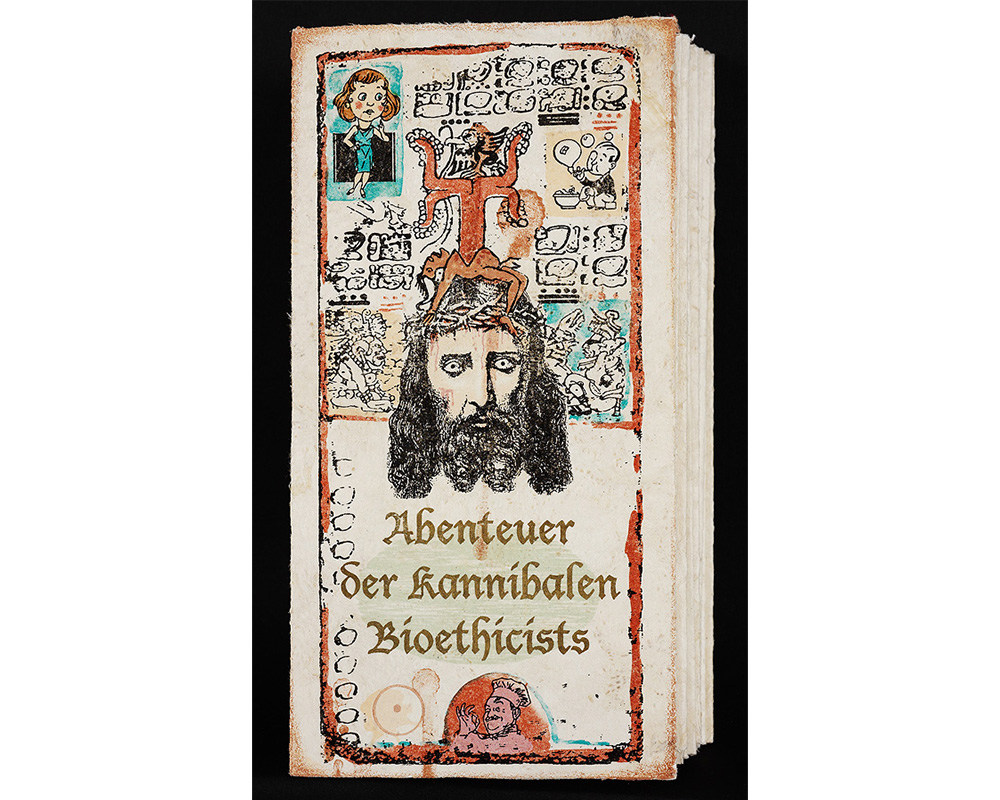
Collecting the Past: Kannibalen Bioethicists
Guest blogger Amenda Cho is a Hampshire College student, class of 2015. Her academic concentrations at Hampshire were Anthropology, Journalism, and Photography. The original version of this work was written for Collecting the Past: Art and Artifacts of the Ancient Americas. This course was offered Spring 2015 by Dana Leibsohn, Priscilla Paine Van der Poel Professor of Art.
One of the things that is interesting about the Abenteuer der Kannibalen Bioethicists codex is how many different critiques can be read within the piece of work. There are many different ways of reading the cannibalism theme, the appropriation of different cultures, and how the art industry has played a role in that within the piece, but one thing that stood out to me was the “blood stains” present throughout.
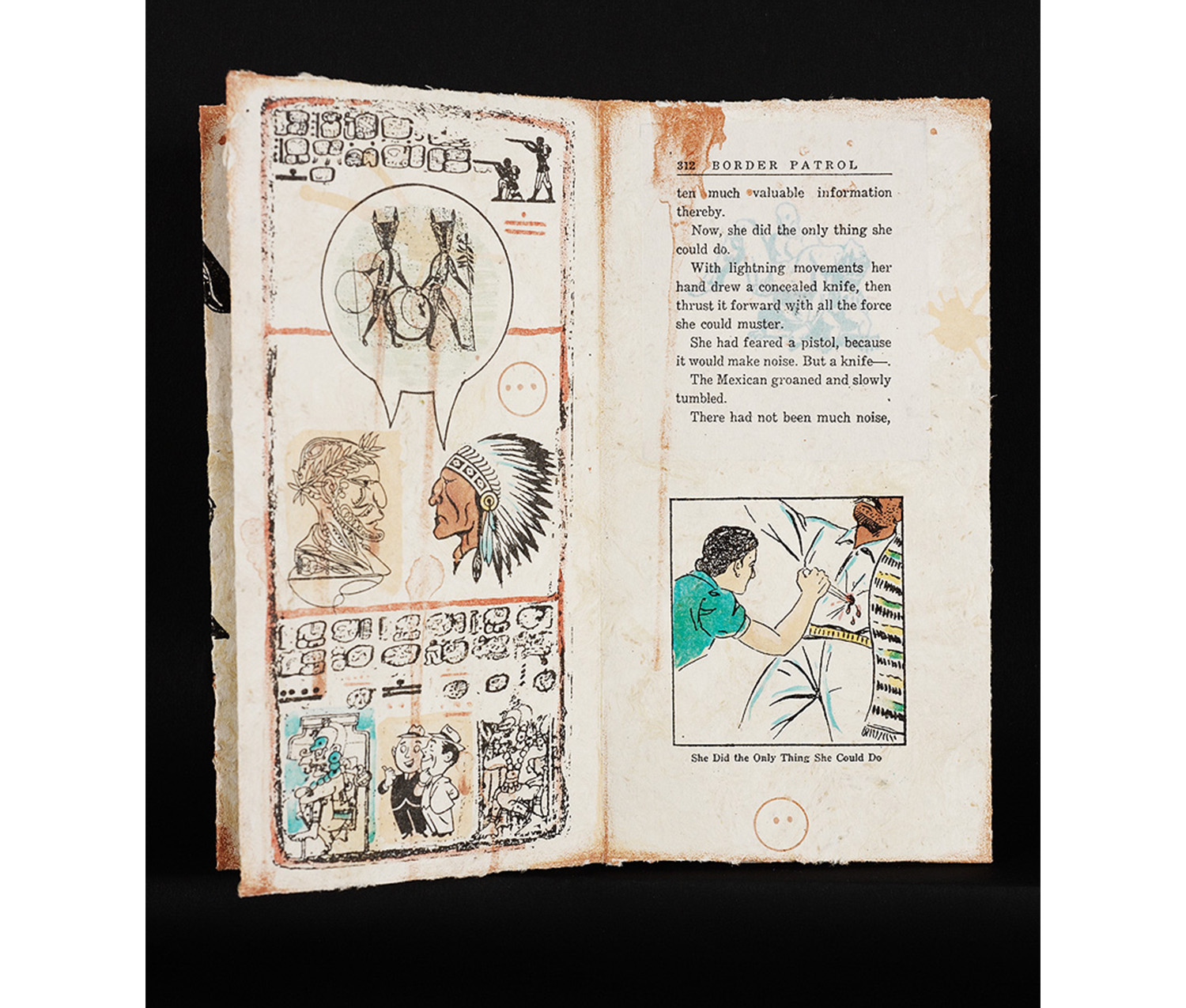
Page from Abenteuer der Kannibalen Bioethicists
They are obviously not real blood stains, but they are a reference to how the Mayans have become associated with violent religious rituals that include cannibalism, and it also refers to how the Western world has appropriated the images and text of the Mayan culture and consumed them. Though this is a strong theme throughout the piece, what caught my attention with the blood stains is how it is a reminder that this ritual of cannibalism continues through the work and through people who are viewing it. As a part of the audience, we “consume” this piece as a work of art which critiques the consumption and appropriation of other cultures in art, and yet by viewing it, we are participating in exactly what the piece is critiquing. This causes one to think about the audience’s own influence in how art is understood, and the different filters and packaging the piece goes through before actually reaching the audience.
So who is this codex geared towards? Historically, codices made in the Mayan culture were used to keep records of religious and spiritual rituals, as well as to keep a written record of the people’s history. However a majority of the codices were burned by the Christian church, as they were seen as pagan and unholy texts. Those that have survived until now somehow made it to Europe before the burning of the codices, and are still located in different parts of Europe today.
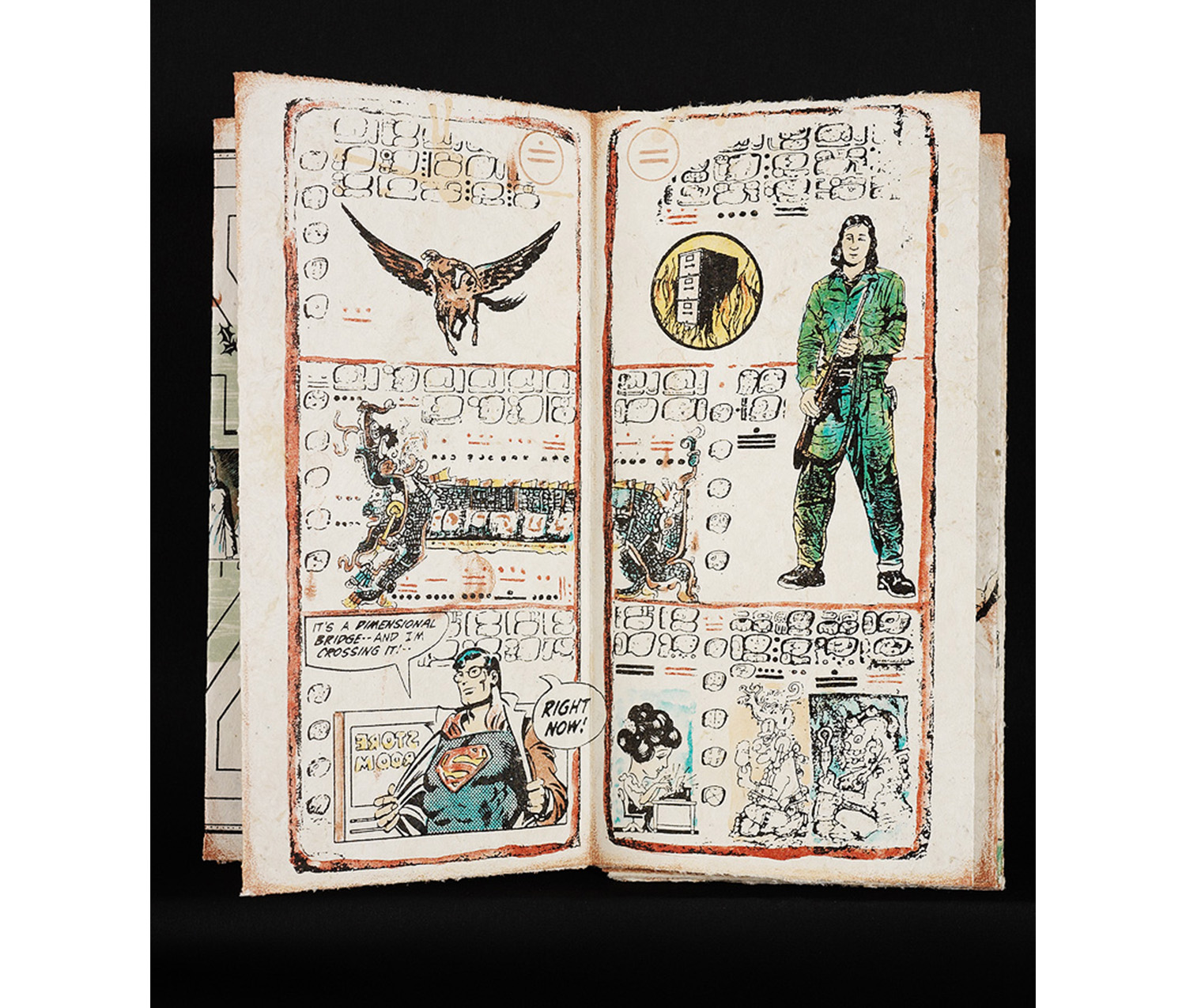
Page from Abenteuer der Kannibalen Bioethicists
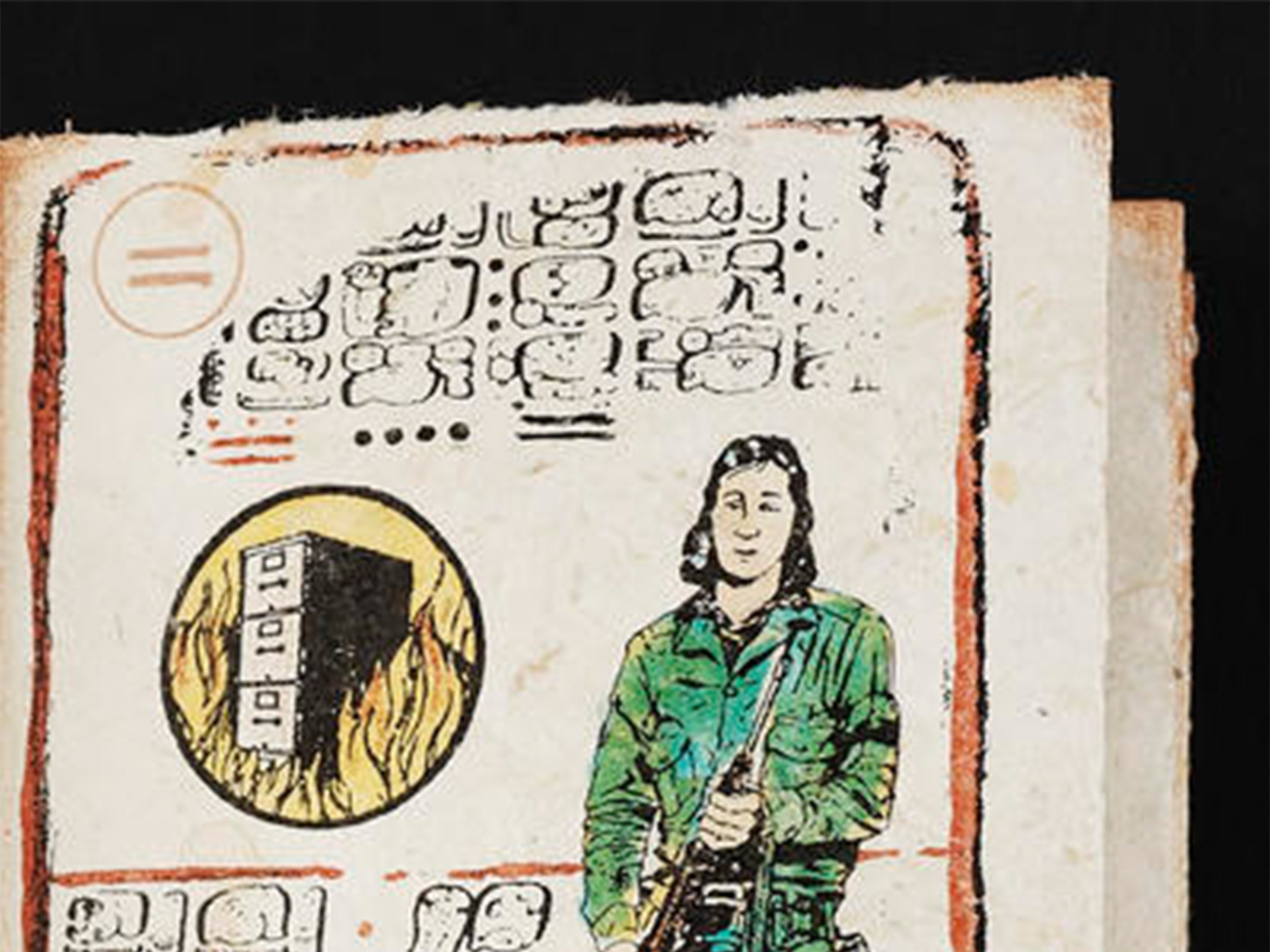
Detail of burning filing cabinet
When considering this, there are several pages of the codex that make more sense, specifically page ten (above) which has the image of a burning filing cabinet. This also means that these same codices that were used to teach history to younger generations of Mayan people are now in display for mostly the Western world to decipher, consume and teach the rest of the world about. This is something that Enrique Chagoya is very critical of and what he tries to call attention to with this codex.
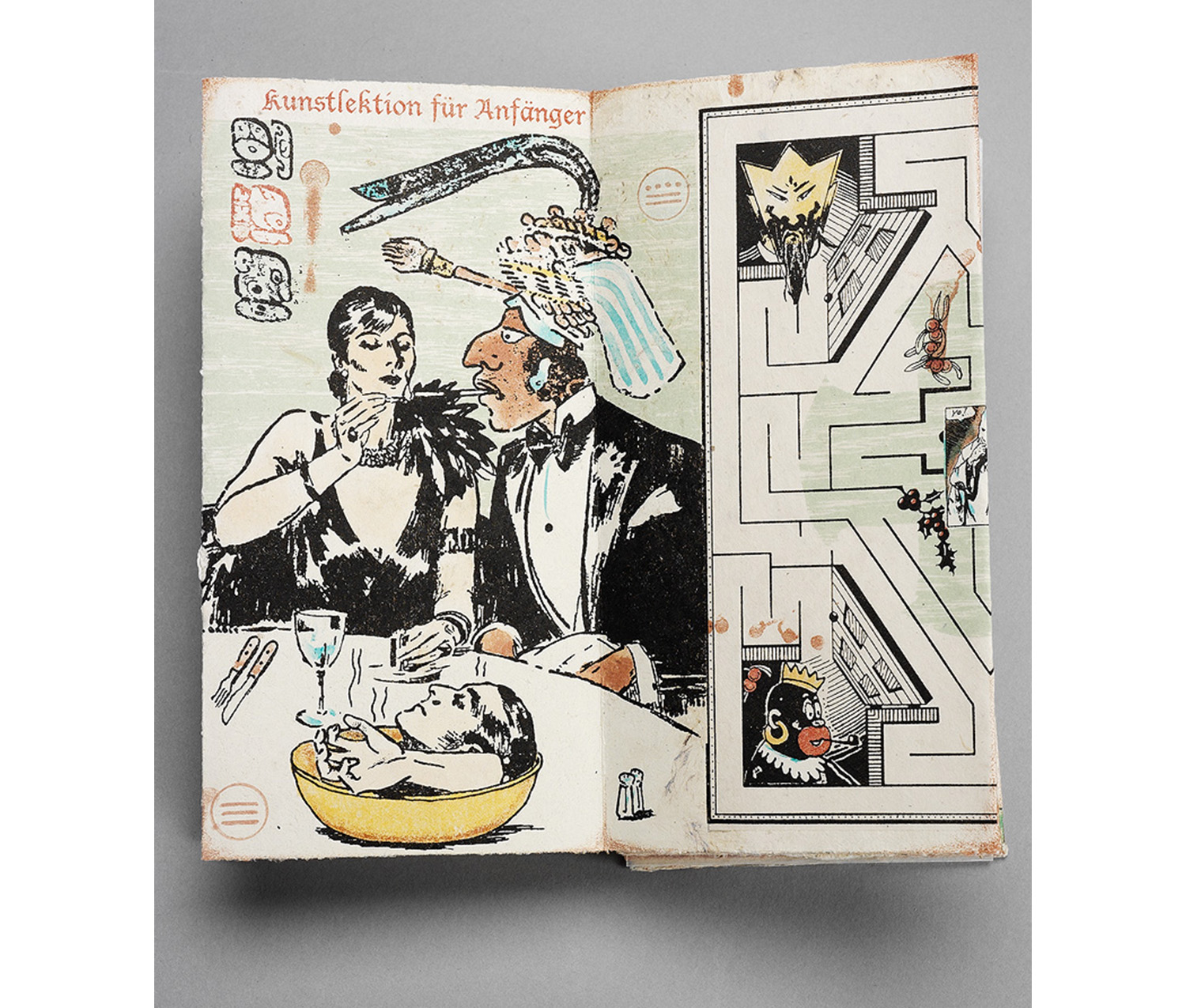
Page from Abenteuer der Kannibalen Bioethicists
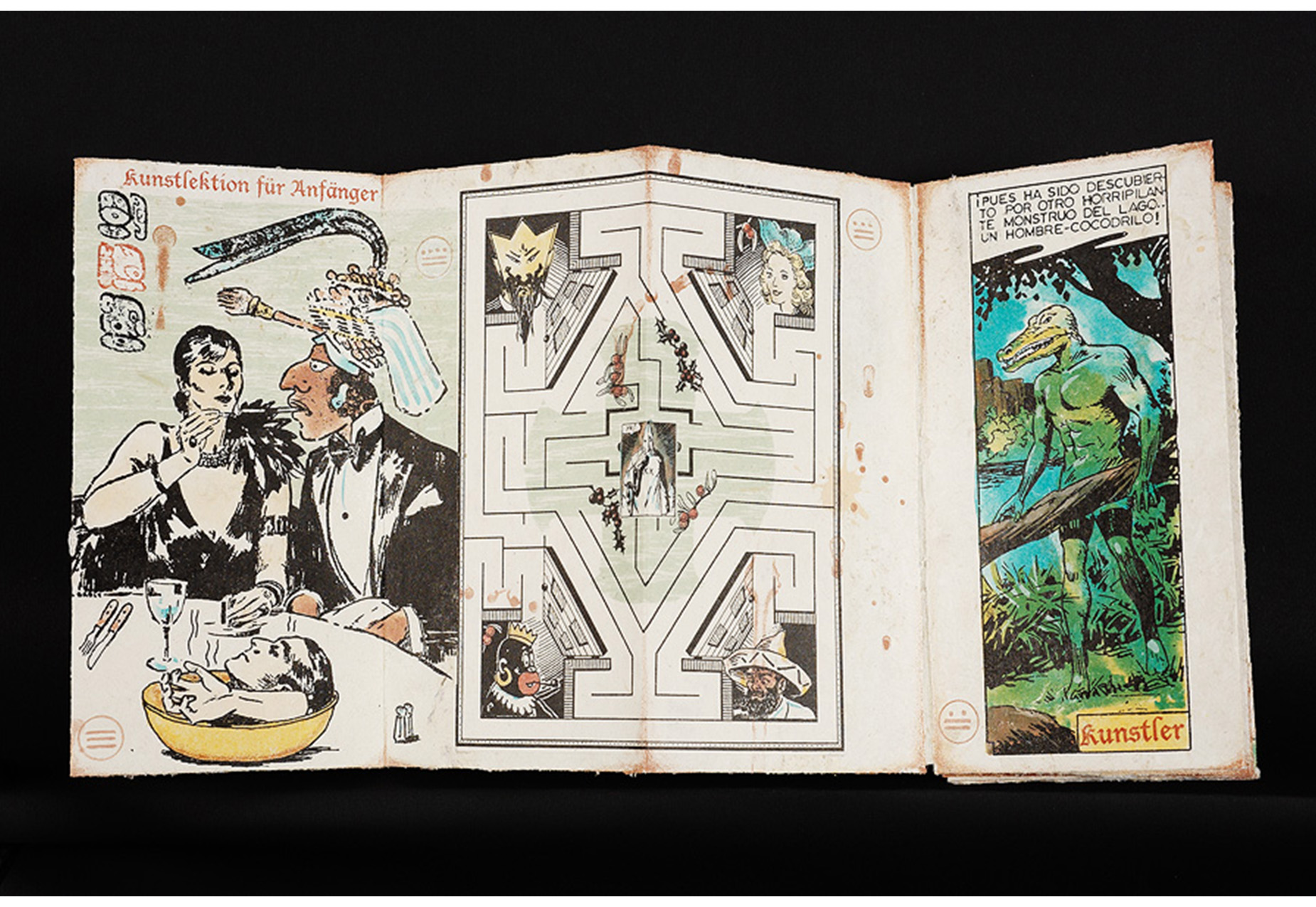
Page from Abenteuer der Kannibalen Bioethicists
Enrique Chagoya is currently a professor of Art and Art History at Stanford University, but was born and raised in Mexico City, Mexico. It was here that he became more aware of ancient indigenous beliefs, imagination, and history. It is also here, through his Nahuan nurse, that he became empathetic towards the Indian side of Mexican culture. This gives some information as to which side of the narrative Chagoya relates more readily to and to whom he might be directing the codex and its critique toward.
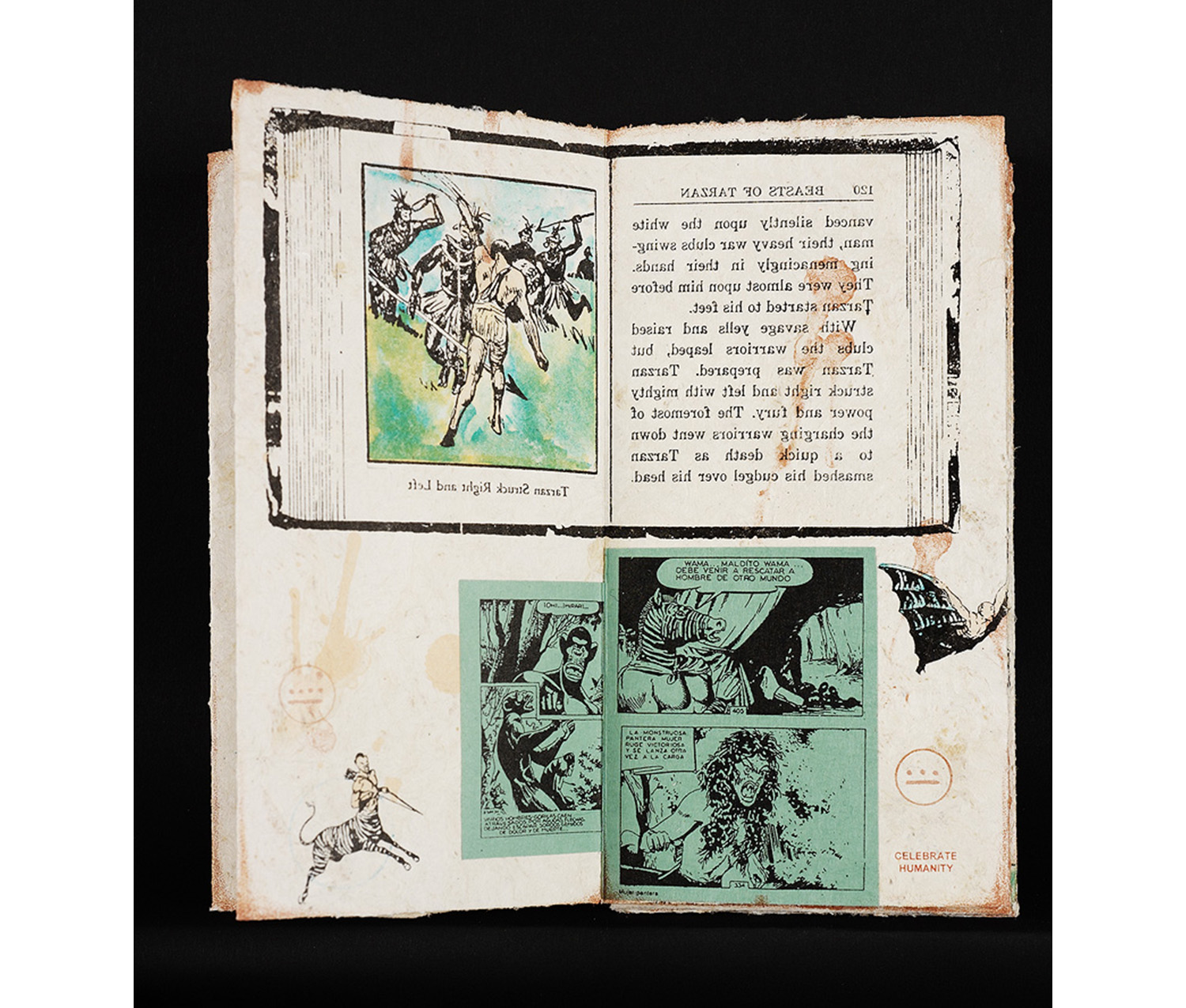
Page from Abenteuer der Kannibalen Bioethicists
When talking about the codex, Chagoya uses the terms “reverse anthropology” and “cannibalism” as metaphors of the process of how dominant cultures are able to rewrite and redefine traditions and cultures of other groups of people, and this is something he tries to illuminate through the cannibalism theme throughout this piece. This seems to suggest that the piece was made for the dominant culture, currently the Western world, to attempt to understand, as these terms are critiques of things the dominant culture participates in.
It is also obvious that the codex was made for Western consumption because of the main languages used throughout the codex. The codex begins with a title that comes from the German language, and continues to use both English and German throughout, even until the end. This is interesting because of the original purpose of the codex in the Mayan context. However, it almost builds more on the cannibalism theme, as it is a reflection of a group of people’s history that is now made specifically for the consumption of the Western powers.
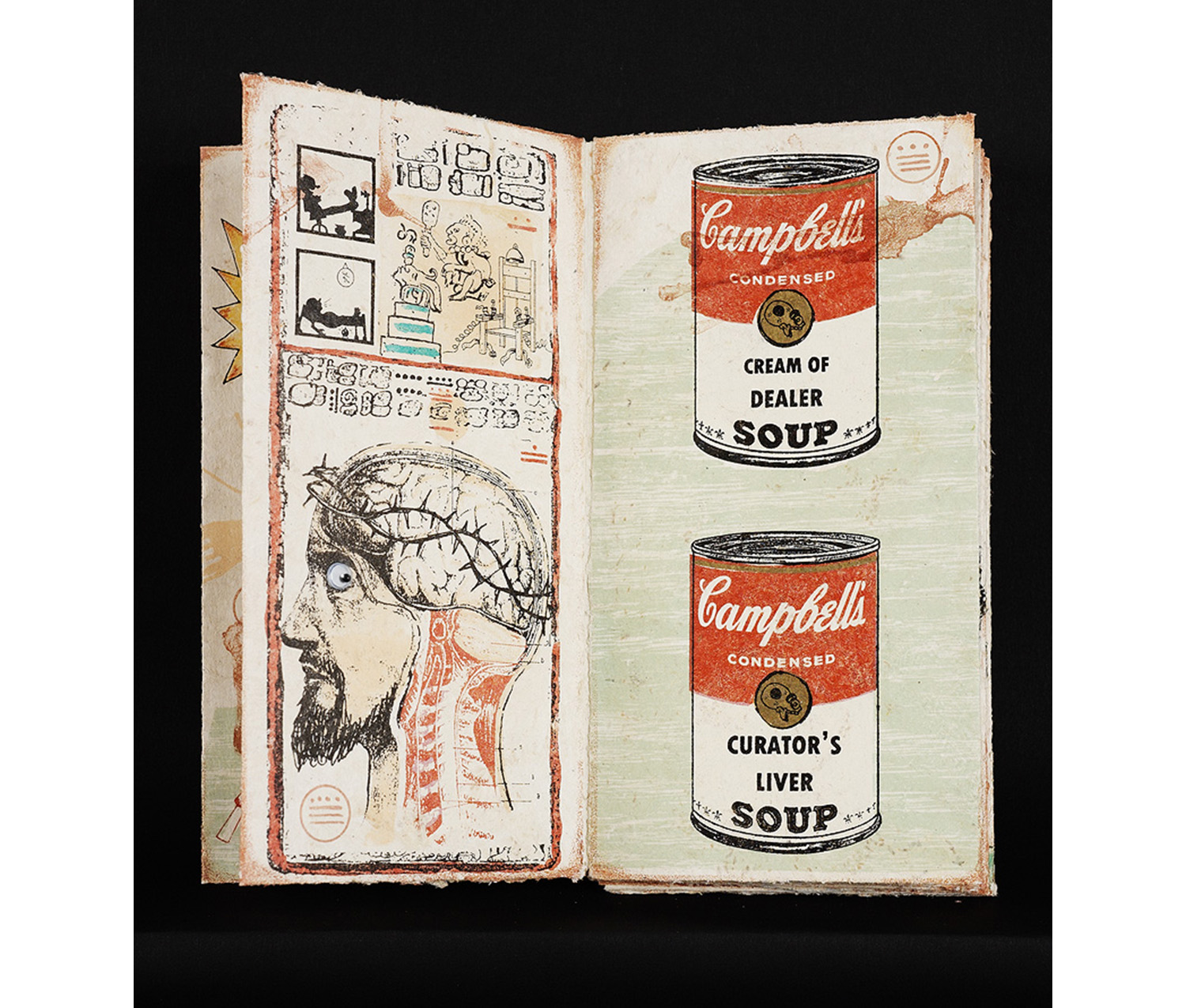
Page from Abenteuer der Kannibalen Bioethicists
Another group of people that the codex is geared toward is the art industry and those who participate in it. This is made most obvious from pages sixteen to eighteen where the popular images of Andy Warhol’s Campbell’s Soup Cans are appropriated, and instead of having the traditional “Tomato Soup” written on it, it now uses the body parts of the art industry such as “Artist’s Brains Soup” and “Critic’s Tongue Soup” (above). This plays off the audience’s role in the consumption of art and the packaging that they take art in because many times, people come to art with an understanding that is founded from specific perspectives, such as through a curator or a critic. This is parallel to Chagoya’s critique of who is able to write history, because similar to the histories of certain cultures, there is a filter, or a re-packaging, of people’s understanding of art, as there is a re-translation of cultures and traditions.
This piece is mainly geared towards these two specific groups of people. However, as mentioned before, the audience, no matter their background, is still a participant in this. So despite messages that are being sent through this piece, everyone who views it is participating in the consumption of different cultures and their art. This almost seems to say that despite Chagoya’s critique of this practice, it is something that is a part of a cycle and that it is something that is inevitable since everyone is participating in it.